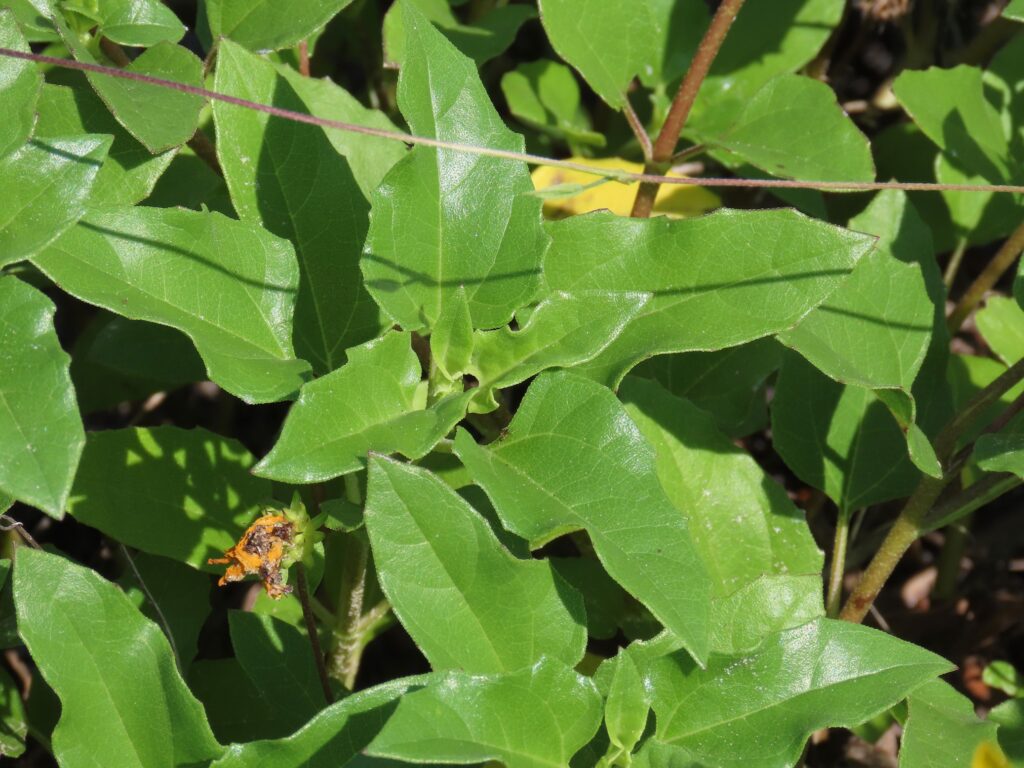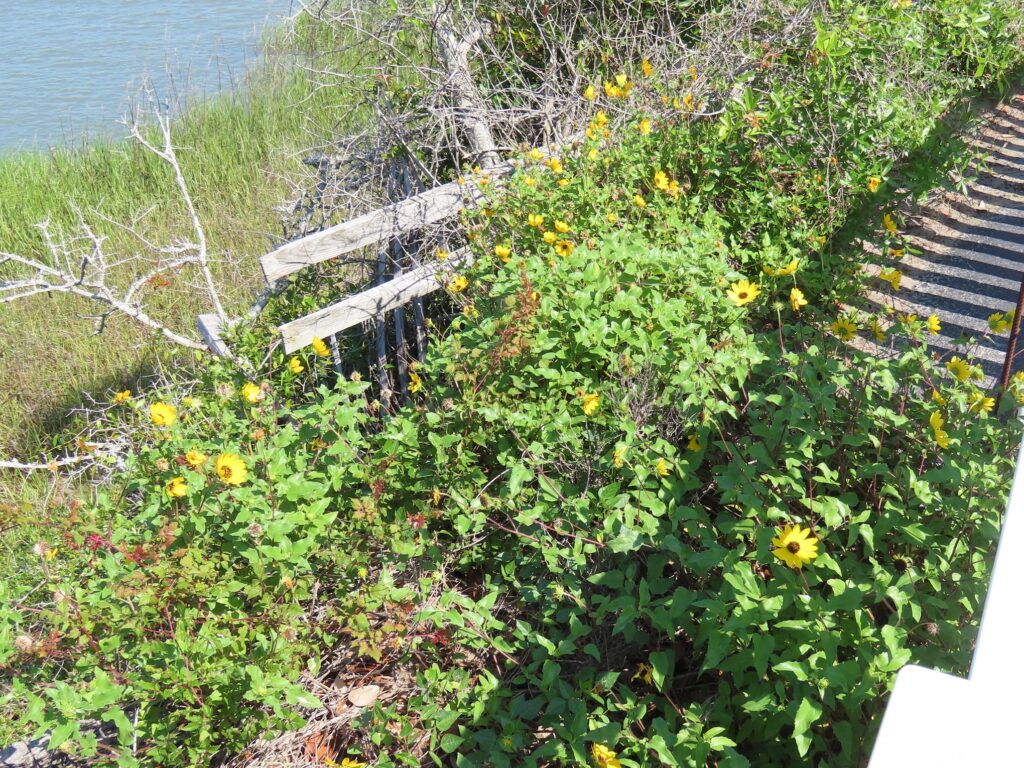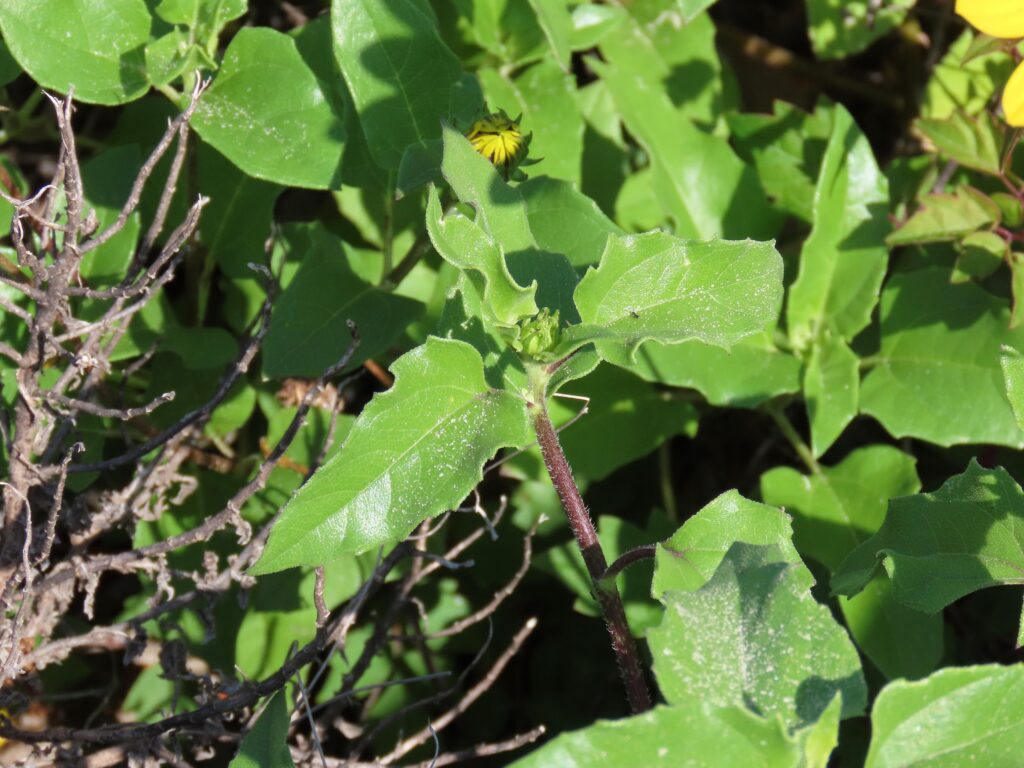



This week for Flora and Fauna Friday we find swaying in the sea breeze the blooms of Beach Sunflower (Helianthus debilis).
Beach Sunflower, sometimes called Cucumberleaf Sunflower, is a species native to all the Gulf States and found throughout Florida. Thanks to man it has moved its way up the Eastern Seaboard and now calls most barriers islands in South Carolina home. Beach Sunflower is a subtropical species, growing as a perennial where winter freezes are scarce and mild. Yet, in colder climes it can persist as an annual thanks to being a prolific re-seeder. Beach Sunflower has a very low growth-form for a Sunflower, growing as a bushy groundcover with creeping stems just ankle high above the ground. This is an adaptation to resist strong and sustained winds. Its leaves are opposite and triangular in shape. Its flowers grow low as well, not much more than a foot above the soil. Their flowers fit the traditional mold for our native sunflowers. An ebony-black disk, flecked with the lemon-yellow light of anthers is ringed in dozens on golden yellow petals to produce a showy two to three inch compound flower. In late April, the flowers of Beach Sunflower begin to appear here in South Carolina. They provide a bounty of pollen and nectar to our native bees, butterflies, and other pollinators from spring to throughout the dog days of summer.
Beach Sunflower is one of those species that sits squarely in the gray area between exotic and native, being native to the southeast but not to South Carolina specifically. Regardless, it has found its way into a niche here thanks to its drought tolerance, heat resistance, and ability to survive on infertile, sandy soils. This allows Beach Sunflower to grow within the dune systems of our beaches, providing a splash of color and a pocket of pollinator habitat alongside our native flora. It also does well in cultivation and can be a valuable asset to butterfly and pollinator gardens on weathered sand ridge soils or in urban areas.